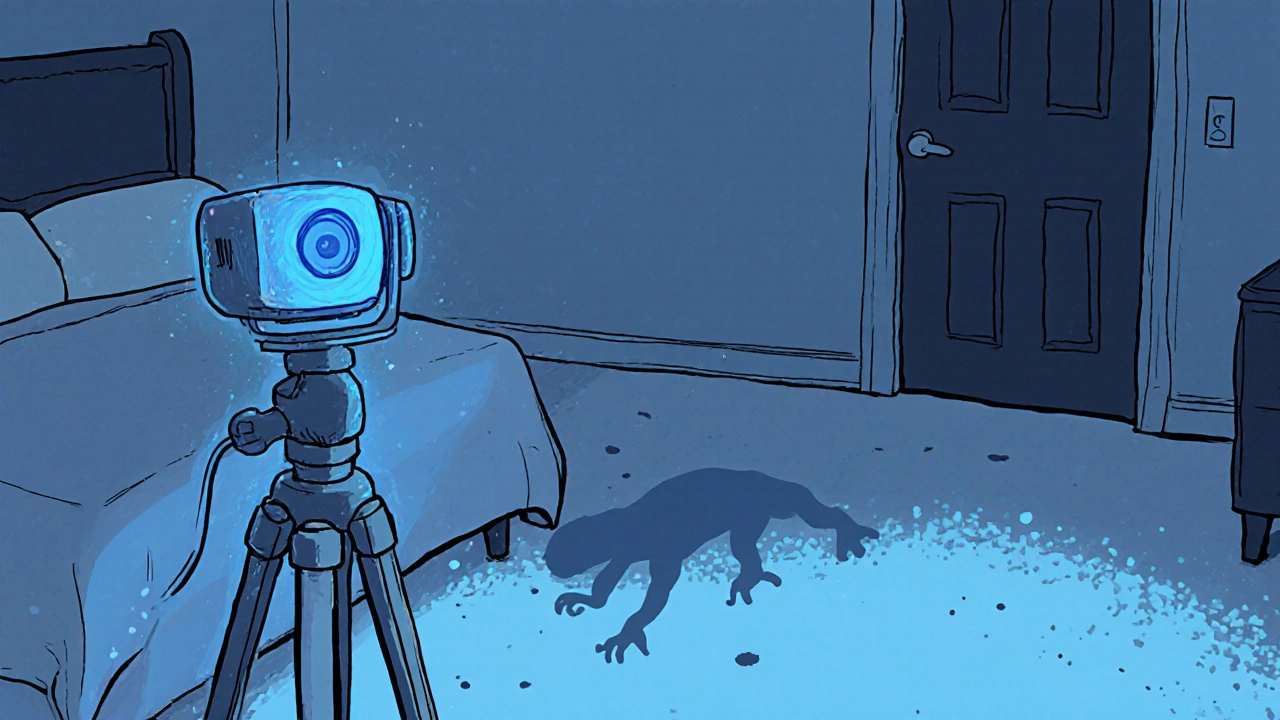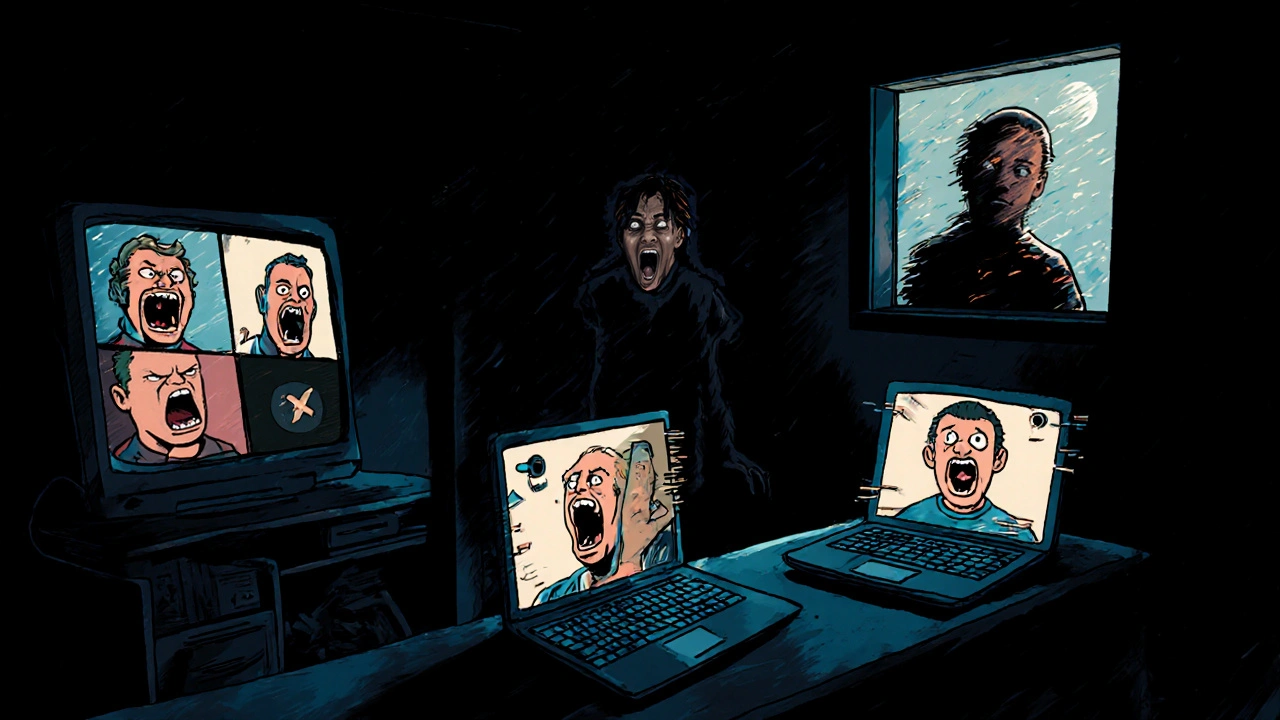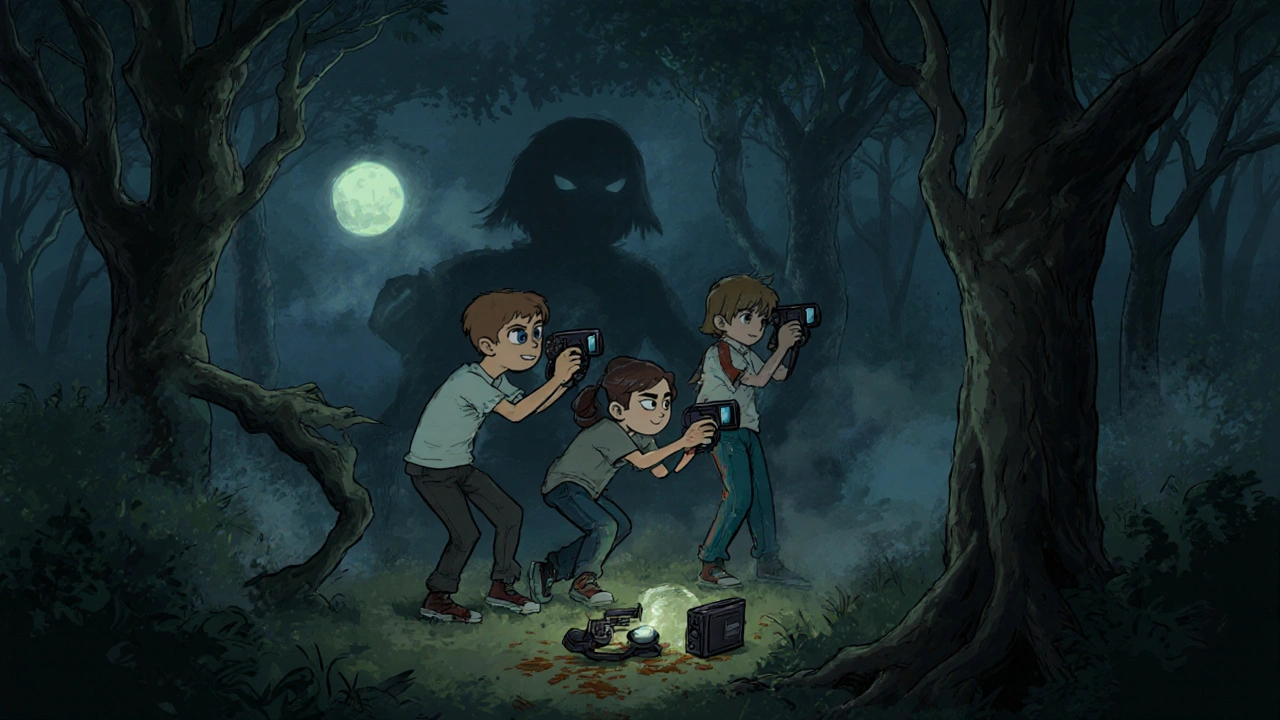There’s something about a shaky camera, a whisper in the dark, and the sound of someone breathing too fast that makes your skin crawl. Not because of jump scares or monsters with fangs - but because it feels real. That’s the power of found-footage horror. It doesn’t just show you fear. It makes you feel like you’re holding the camera when it drops.
Why This Format Works So Well
Found-footage horror isn’t just a style - it’s a trick. It tricks your brain into believing what you’re watching actually happened. No orchestral music. No polished lighting. No professional actors pretending to be scared. Just people with a camera, trying to survive something they can’t explain. A 2022 study from the Journal of Media Psychology found that 78% of viewers felt more afraid watching found-footage horror than traditional horror films. Why? Because your brain doesn’t treat it like fiction. It treats it like evidence. When you see someone fumble with a camcorder while screaming in a forest, your amygdala doesn’t say, “This is a movie.” It says, “Get out of there.” The format started small. Before The Blair Witch Project, there was The Last Broadcast (1998), a low-budget indie film that used fake news reports and missing-person flyers to sell the illusion. Then came Blair Witch - made for $600,000, earning nearly $250 million. Its secret? A viral campaign that made people believe the footage was real. Police reports. Missing persons websites. Even a fake documentary on MTV. It wasn’t marketing. It was a hoax.The Classics That Defined the Genre
You can’t talk about found-footage horror without starting with The Blair Witch Project (1999). Three students vanish in Maryland’s Black Hills Forest. What’s left? Three camcorders. One with 90 minutes of shaky, terrified footage. The camera wasn’t just a tool - it was a character. The way the filmmaker dropped it when something moved behind him? That’s not acting. That’s instinct. Then came Paranormal Activity (2007). A couple sets up a camera in their bedroom. Night after night, something moves. The terror isn’t loud. It’s quiet. A door creaking. A shadow on the wall. The camera stays still. The fear creeps in. It made $193 million on a $15,000 budget. That’s not luck. That’s perfect execution. REC (2007) took it to another level. A Spanish news crew enters a quarantined apartment building. The camera stays locked to one reporter’s shoulder. No cuts. No escape. The sound design is brutal - you hear every gasp, every thump against the door. Critics gave it a 95% on Rotten Tomatoes. Why? Because it doesn’t show you the monster. It shows you the moment you realize you’re not alone. And then there’s Cannibal Holocaust (1980). Yes, it came before the genre even had a name. A film crew disappears in the Amazon. Their footage is found. The problem? The animal killings were real. A turtle was cut open on camera. A pig was slaughtered. It was banned in 24 countries. It’s not just horror - it’s an ethical line no one’s dared cross since.The Modern Innovators
Technology changes. Horror adapts. In 2020, during lockdown, a filmmaker named Rob Savage made Host - a horror movie shot entirely over Zoom. Six friends gather for a virtual séance. One of them isn’t who they say they are. The camera angles? All from laptop webcams. The sound? Muffled through speakers. The terror? Real. It cost $127,000. It made $28 million. On streaming. In a pandemic. People watched it in their bedrooms, headphones on, lights off. And they screamed. Skinamarink (2022) went even further. No dialogue. No plot. Just a kid’s bedroom. Two children wake up. Their parents are gone. The TV is on. The lights flicker. The camera never leaves the room. It was shot on an iPhone 12, then degraded to look like a 1990s VHS tape. Theaters had to install old CRT monitors just to show it right. People walked out. Others stayed frozen. One Reddit user wrote: “I didn’t know I was scared until I realized I hadn’t breathed in five minutes.” Late Night With the Devil (2023) used AI to fake 1970s broadcast glitches - static, signal loss, distorted faces. The VFX team didn’t use CGI. They trained a model on old TV interference patterns. It looked real. Because it was.
What Makes a Great Found-Footage Film?
Not every shaky cam movie works. Most fail. Why? First - the camera has to make sense. If someone’s running from a demon, why are they still filming? That’s a red flag. The best films give you a reason: a student documentary, a news crew, a parent recording their child. The camera isn’t there for the audience. It’s there for the characters. Second - sound matters more than visuals. In REC, you hear the breathing. In Host, you hear the lag. In Blair Witch, you hear the wind, the rustling, the silence right before something screams. No music. Just the world. That’s what makes it feel alive. Third - the ending has to land. Sixty-eight percent of found-footage films collapse in the third act. They run out of ideas. The Bay (2012) ends with a government cover-up. Too abrupt. Too fake. Blair Witch ends with silence. No explanation. Just darkness. That’s why it sticks with you.The Dark Side of the Format
It’s not all perfect. Motion sickness hits 37% of viewers. The constant shaking, the spinning, the sudden zooms - it’s like being on a rollercoaster with no safety bar. MIT found that tilting the camera just 15 degrees reduces nausea by 63%. Smart filmmakers use that trick now. Then there’s the fatigue. Gen Z viewers say Paranormal Activity isn’t scary anymore. Only 22% find it frightening. The novelty wore off. So now, filmmakers are forced to get smarter. TikTok filters. AR glasses. Interactive video games like The Outlast Trials - where you’re not just watching. You’re trapped in the footage. And the ethics? Still a minefield. Cannibal Holocaust is still banned. Some films use real social media data - names, faces, posts - without consent. Skinamarink had to get 200+ permission forms just to use fake YouTube comments.
Where the Genre Is Headed
By 2026, 12 new found-footage horror films are scheduled. One uses AR glasses to show you what the character sees in real time. Another is filmed entirely through smart home cameras - Ring doorbells, Nest cams, baby monitors. You’re not watching a movie. You’re watching your house. The next big thing? AI. Not just for effects. For storytelling. Imagine a film that changes based on your reactions. If you jump, the monster appears sooner. If you look away, it gets closer. It’s not science fiction. It’s already being tested. The genre’s survival isn’t about more cameras. It’s about more truth. The more real it feels, the more it hurts.Where to Start
If you’ve never tried found-footage horror, start here:- Beginner: Paranormal Activity - slow, quiet, terrifying.
- Classic: The Blair Witch Project - the one that started it all.
- Modern: Host - short, sharp, and made for your phone.
- Extreme: REC - claustrophobic, brutal, unforgettable.
- Experimental: Skinamarink - if you’re ready to lose sleep.
Why is found-footage horror scarier than regular horror?
It tricks your brain into thinking what you’re seeing actually happened. No polished effects, no background music - just raw, unfiltered footage. Your mind fills in the gaps, and that’s where real fear lives. Studies show viewers feel 78% more fear with this format because it feels like evidence, not entertainment.
What’s the best found-footage horror movie for beginners?
Start with Paranormal Activity. It’s slow, quiet, and builds tension through small details - a creaking floor, a door slowly opening. The camera stays still, making it easier to watch without motion sickness. It’s the perfect introduction to the genre’s power of suggestion.
Can you really make a found-footage movie with a phone?
Absolutely. Host (2020) was made entirely on Zoom using webcams. Skinamarink used an iPhone 12. The key isn’t the gear - it’s the rules. The camera must feel like it belongs in the story. No fancy lighting. No cuts that don’t make sense. Even a $200 phone can create terror if the storytelling is tight.
Why do some found-footage films feel boring or cheap?
Most fail because they break the illusion. If the characters suddenly stop filming to scream, or if the camera stays perfectly steady during chaos, it feels fake. The best films treat the camera like a person - shaky when scared, dropped in panic, turned off when it’s too late. Also, many run out of ideas by the end. The best ones leave you with more questions than answers.
Is the genre dying because people are tired of it?
Not dying - evolving. Gen Z finds classics like Paranormal Activity less scary, but that’s pushing filmmakers to innovate. Now, you’re seeing horror through TikTok filters, smart home cameras, and AI-generated glitches. The format isn’t tired. It’s just adapting to new ways we experience reality - and fear.
What’s the most disturbing found-footage film ever made?
Cannibal Holocaust (1980) is still the most disturbing - not because of ghosts or demons, but because it used real animal killings on camera. It’s not just horror. It’s exploitation. That’s why it’s banned in 24 countries. Even today, no filmmaker dares go that far. The real horror isn’t what’s on screen - it’s that someone actually filmed it.

